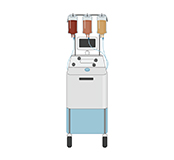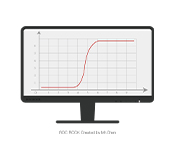0512-67998889(Suzhou)
18051093220(Shenzhen)
HER2 expression is commonly found in solid tumors such as breast cancer and gastric cancer, for instance, it accounts for approximately 20% of breast cancer cases. Its overexpression is associated with strong invasiveness and a poor prognosis. Current treatment is centered on HER2-targeted drugs, such as trastuzumab, pertuzumab, and antibody-drug conjugates (ADCs) like emtansine (T-DM1) and trastuzumab deruxtecan (DS-8201). The treatment approach has evolved from single chemotherapy to a multimodal era combining targeted and immunotherapy, leading to improved patient outcomes. However, drug resistance remains the biggest challenge, along with unmet clinical needs such as differences in efficacy across different tumor types and the treatment of brain metastases.
Despite over two decades of continuous refinement in surgical techniques and the notable clinical advancements in the application of taxanes, platinum-based agents, and other targeted therapies, the 5-year survival rate for advanced-stage ovarian cancer patients still remains below 30%. Alarmingly, over 75% of these late-stage patients experience disease recurrence following the completion of standard initial treatment. Consequently, there remains an imperative to explore novel and effective pharmacological interventions for platinum-resistant patients to attain superior therapeutic outcomes.
HER2CAR-M cells were introduced into the study subjects. Weekly samples of ascitic fluid and peripheral blood were collected for the assessment of tumor response, safety profiles, and the engraftment efficiency of HER2CAR-M cells.




1.Patients or their legal guardians must voluntarily participate and sign an informed consent form.
2.Female patients aged between 18 and 70 years.
3. ECOG performance status S2, life expectancy of>12 weeks
4. Patients must have a pathological diagnosis of ovarian cancer, including epithelial, germ cell, sex cord-stromal tumors, or other pathological types, with HER2 expression confirmed to be ≥ 210% using immunohistochemistry.
5. Patients must have been diagnosed with ovarian cancer and received at least first-line treatment, including disease recurrence/progression during first-line treatment. Recurrence/progression is defined as follows (meeting any of the following criteria):
a. Clear documentation of progression in imaging studies.
b. Continuous elevation of CA125 levels (confirmed one week later) accompanied by clinical symptoms or physical examination findings indicative of disease progression.
6. Patients must have measurable or evaluable disease (ascites is a mandatory requirement), with at least one lesion having a precise measurement diameter (according to RECIST V11 criteria, the lesion should have a longitudinal diameter of 210 mm on spiral CT scans or a short-axis diameter of 215 mm for enlarged lymph nodes). For lesions that have previously undergone local treatment, they can only be considered measurable lesions if there is confirmed progression according to RECIST V1.1.
If you are interested in participating in this study, please provide the following information truthfully and submit it. Our staff will contact you for further arrangements.
0512-67998889(Suzhou)
18051093220(Shenzhen)

Cathy.Lv@rocrockbio.com(Suzhou)
lliangjing@rocrockbio.com (Shenzhen)